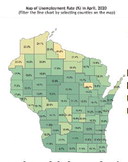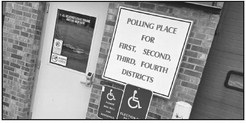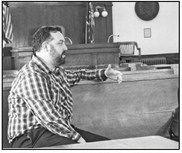Labor statistics give hope for swift recovery


2020 has been a banner year for bad news, which is why it was refreshing on Friday to hear some positive news — even if you have to put an * by it.
The Federal Bureau of Labor Statistics (BLS) released the monthly jobs report showing a growth of 2.5 million jobs in the country in May. This was in direct contrast to the expected continued job losses many economists had forecast as the country and world continues to deal with the ongoing COVID-19 pandemic.
The * comes in because the BLS, in a show of transparency, noted it likely misclassified a number of unemployed people as being temporarily unable to work rather than being laid off. This means the national unemployment rate for May was likely closer to 16% than it was to the 13% listed in last week’s report. The BLS staff says the same misclassification occurred in April which would mean the national jobless rate was actually closer to 20% at the peak of when most state economies were restricted to “essential” workers.
In normal situations a 16% unemployment rate would not be anything to celebrate. However, these are far from being “normal” times and a 3% drop in unemployment claims is much-needed good news that shows the economy is far more resilient than originally projected.
Doomsaying economists had predicted May’s unemployment rate would be higher than that of April and painted a scenario of a free-falling economy due to the global pandemic. While the economic picture has been bleak in many areas, especially in more urban population centers, rural Wisconsin avoided much of that economic pain. Wisconsin’s jobless rates for April were at about half of the adjusted national average.
The broader question for economists and business owners as they try to navigate the turmoil of 2020 is how to effectively gauge the health of the economy. Traditionally, many have turned to the unemployment rate as a key indicator, largely because it can be reported on in near real-time with the rise and fall of claims recorded each week. The unemployment rate is considered a lagging indicator of recessions because employers are slow to lay off staff and even slower to hire new workers back during a period of recovery.
The COVID-19 economic models more closely resemble a toddler playing with a light switch as things go from on, to off to back on again. At the same time, there is a pent up demand for goods and services as consumers have been unable to make purchases due to store closures and supply chain disruptions. This will in turn impact other key statistics like the gross domestic product and the gross national product — things that will get heavy play as elections draw closer.
Just as generals often are accused of “fighting the last war,” rather than preparing for the next one, economists and financial policy makers risk making the same sort of blunders in assuming the current situation operates by the same classical rules as previous economic downturns. Fortunately the federal government moved quickly in putting the bipartisan CARES Act programs in place to help with employee retention and assist states and businesses.
The COVID-19 pandemic has had a significant shortterm economic impact from the global to the local level. What the long-term impact will be remains uncertain.
The job growth numbers released last week give hope for a quick bounce back when the economy fully reopens.
Unemployment in Taylor County
April 2020
Labor Force: 10,442 Employment: 9,302 Unemployment: 1,140 Unemployment Rate: 10.9%




